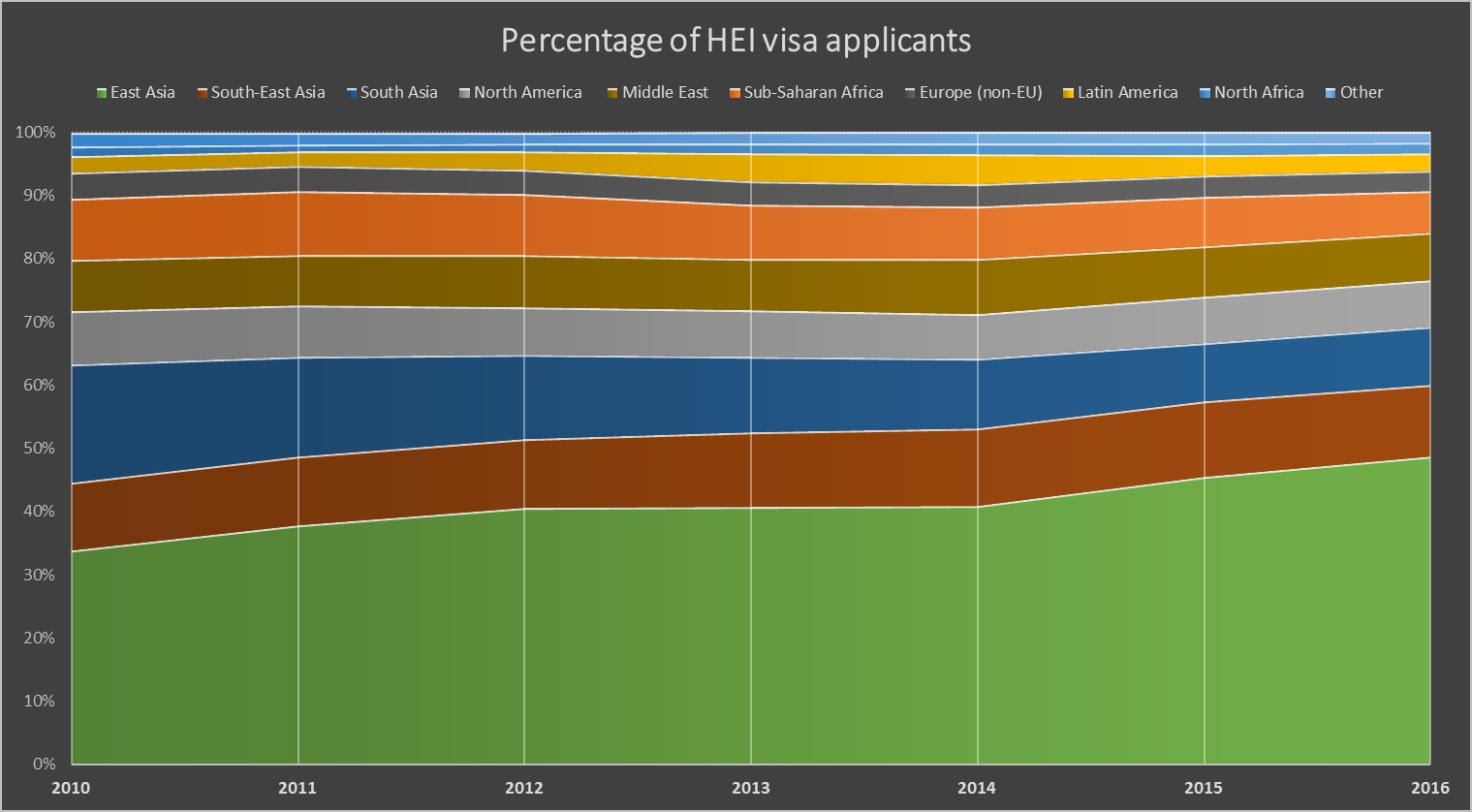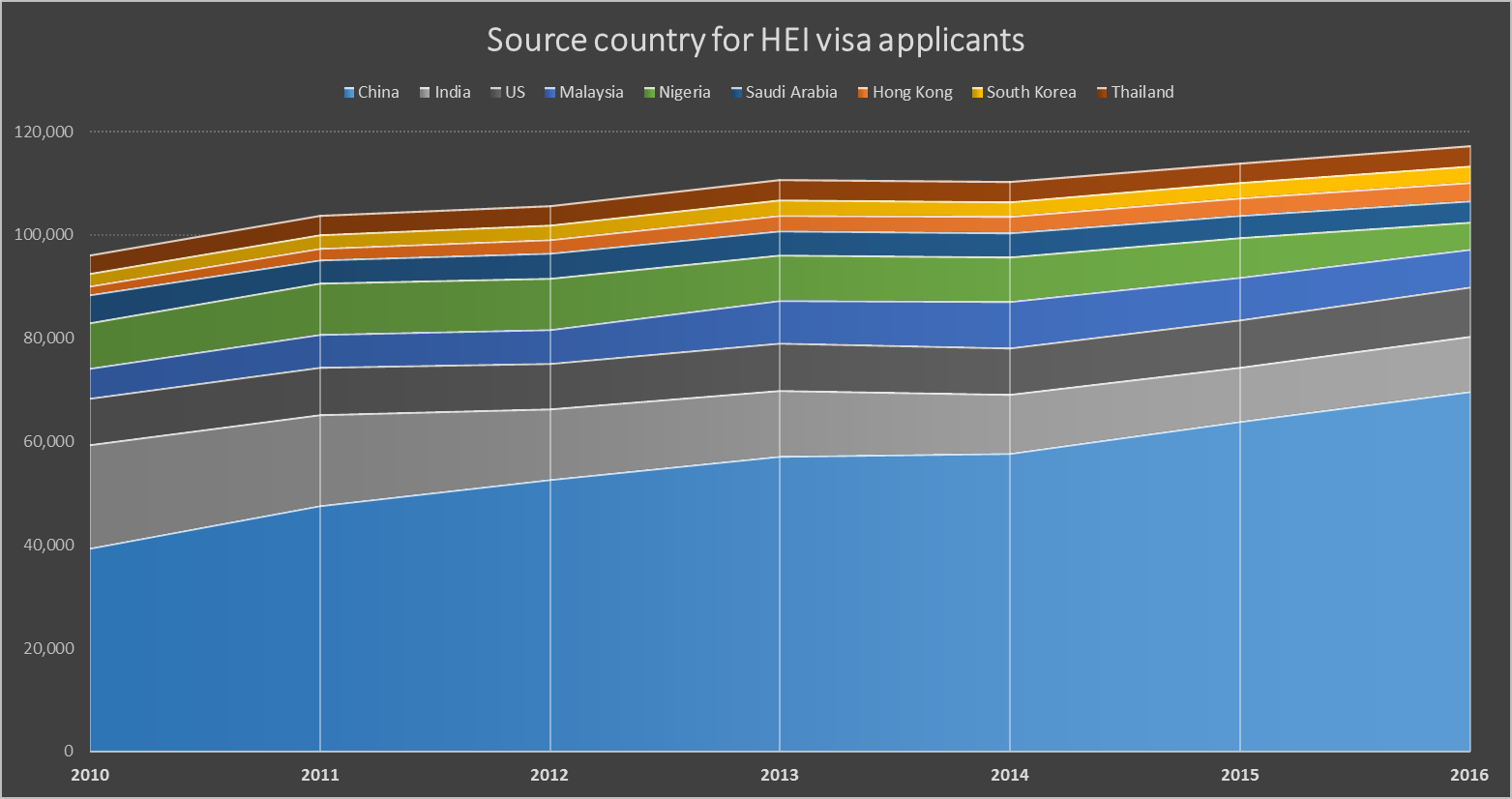The growing dependency of UK higher education on China as its main source of international students has been highlighted in the latest government immigration statistics.
According to the data, released by the UK’s Office for National Statistics and the Home Office, the number of study visas granted to Chinese students rose 10 per cent to 77,290 in the year to March 2017. This represented 37 per cent of all study visas granted to students from outside the European Union over the period.
Delving deeper into the statistics release reveals just what a dramatic turnaround this represents compared with about 10 years ago, when India was a dominant source of non-EU students.
Looking at just those wishing to go to university in the UK – instead of all study visas, which also include, for instance, the further education and schools sectors – suggests that China, and East Asia generally, represent an even bigger share of international student demand.
Home Office data on the number of visa applicants to higher education institutions (a small percentage of whom may have in the end been refused a visa) over the past few years shows that about half (49 per cent) now come from East Asia. If Southeast Asia is also added into the equation, the two regions of the world now represent more than 60 per cent of all visa applications to higher education institutions in the UK.

At the same time, the share of students from the Indian subcontinent (South Asia) wanting to study in the UK has tumbled from almost 20 per cent in 2010 to under 10 per cent in 2016. There has also been decline in demand from sub-Saharan Africa over the period (9.7 per cent to 6.7 per cent) while other regions, such as North America, have seen a smaller drop.
In terms of absolute numbers, visa applicants from China to UK universities hit almost 70,000 in 2016, a rise of 77 per cent compared with 2010, when there were just under 40,000. Meanwhile, the number of students from India seeking a visa to study at a UK university almost halved from 2010 to just over 10,700 last year, although this did represent a slight increase on 2015.
It means that in 2016, out of the nine countries that had more than 3,000 visa applicants to UK universities, India was now only just ahead of the US (from where almost 9,600 students applied) in terms of being the country with the second-highest level of demand after China.

Interestingly, when the total figures for all study visas granted are considered, the US comes second to China in the year to March 2017 with almost 14,300, while India is third (just above 11,600).
As well as the ending of post-study work visas in 2012, it is possible that an increasing focus on making it easier for some research-intensive universities to recruit may be influencing the figures. Last year, the government launched a pilot scheme easing study visa restrictions for four research-intensive UK universities.
According to figures from the ONS, in the year to March 2017, visa applications involving Russell Group universities rose by 7 per cent, way above the 3 per cent overall rise for higher education study.
Find out more about THE DataPoints
THE DataPoints is designed with the forward-looking and growth-minded institution in view




